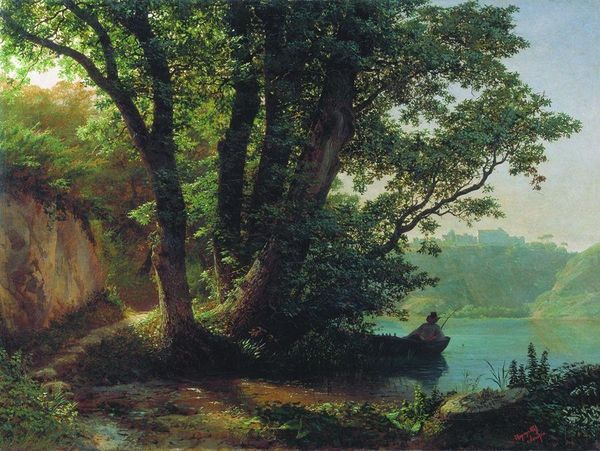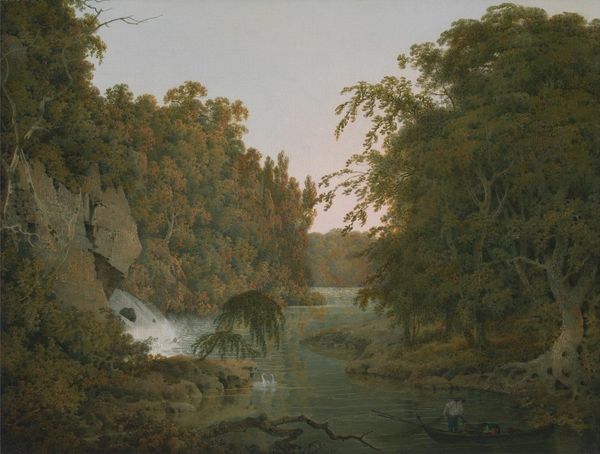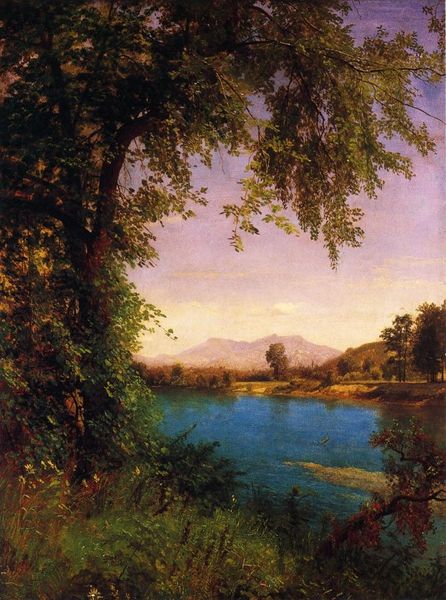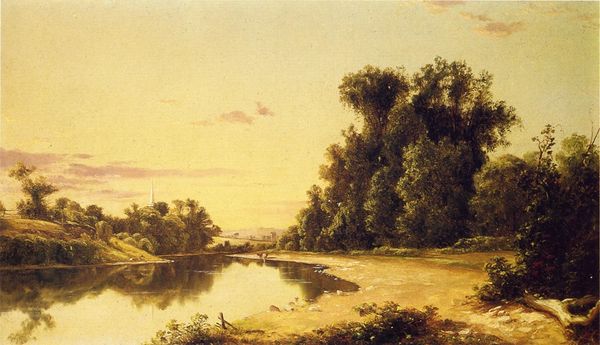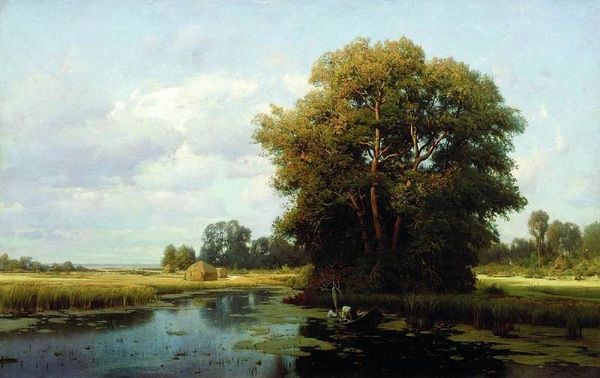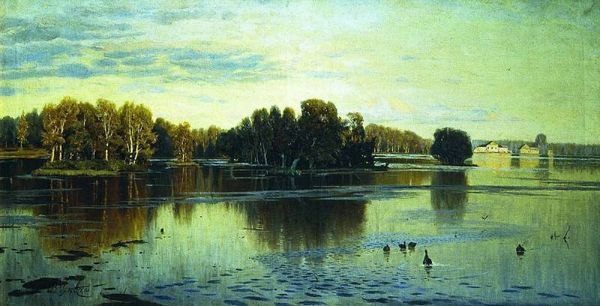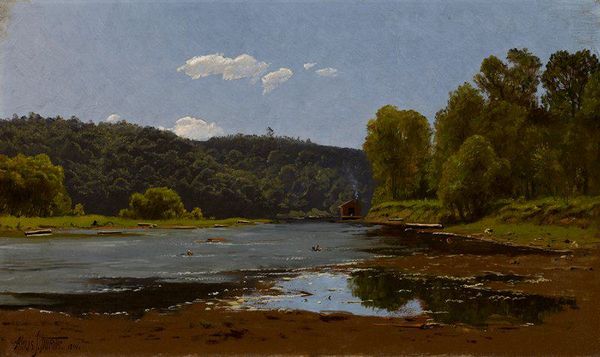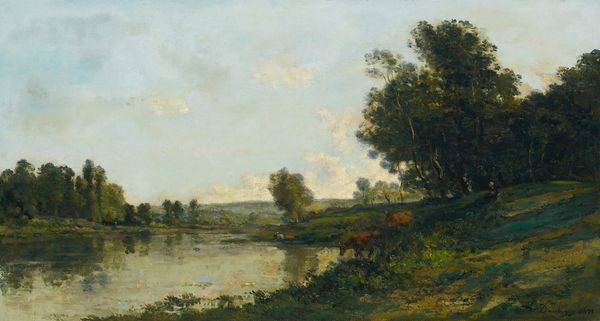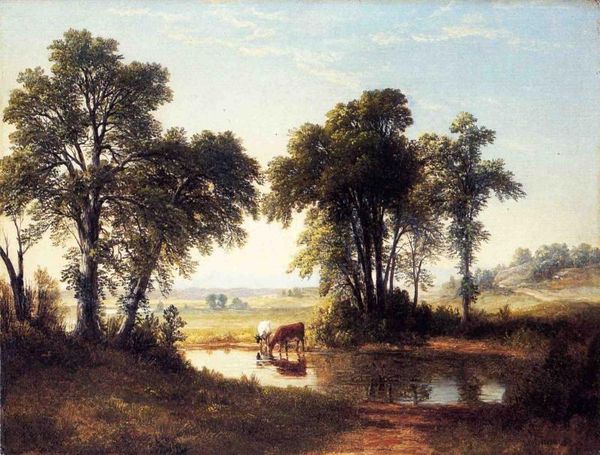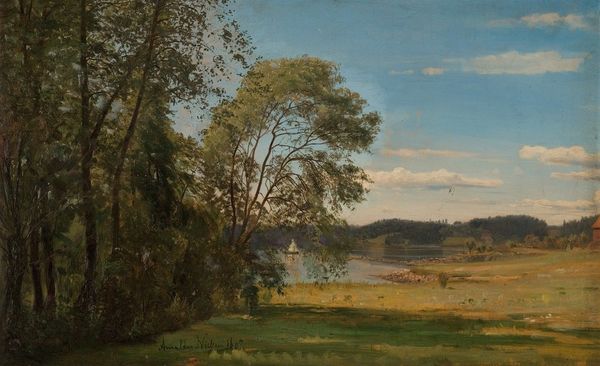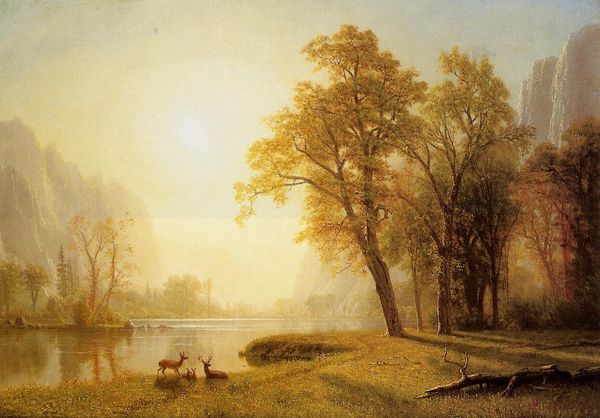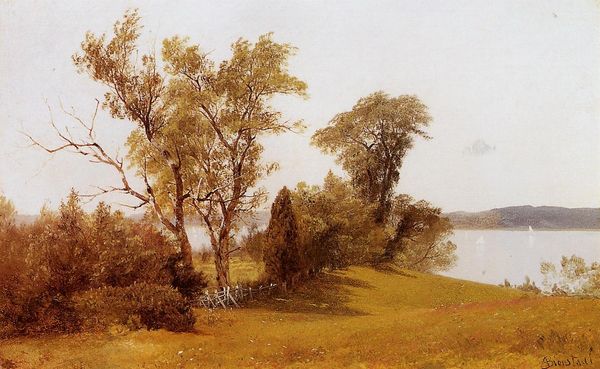
oil-paint
#
tree
#
oil-paint
#
landscape
#
river
#
oil painting
#
natural-landscape
#
water
#
nature
#
realism
Copyright: Public domain
Thomas Moran painted 'On the Catawissa Creek' in oil on canvas. It's an image of pastoral harmony in the American landscape tradition. The painting creates meaning through visual codes that would have been very familiar at the time. It speaks to a yearning for an idealized rural past. Consider the cultural context: rapid industrialization, urbanization, and immigration were transforming American society. Artists like Moran offered a counter-image, one of tranquility and unspoiled nature. We can also relate this to institutional factors, in particular the development of an art market that catered to wealthy urban patrons eager to acquire such scenes. These landscape paintings became symbols of national identity and pride, reinforcing a romantic vision of the American frontier. Yet, by presenting an idealized vision of rural life, such works sidestepped the social realities of agrarian life, such as economic hardship. By consulting period sources, we can better understand the complex social and historical forces that shaped this artwork's production and reception.
Comments
No comments
Be the first to comment and join the conversation on the ultimate creative platform.
